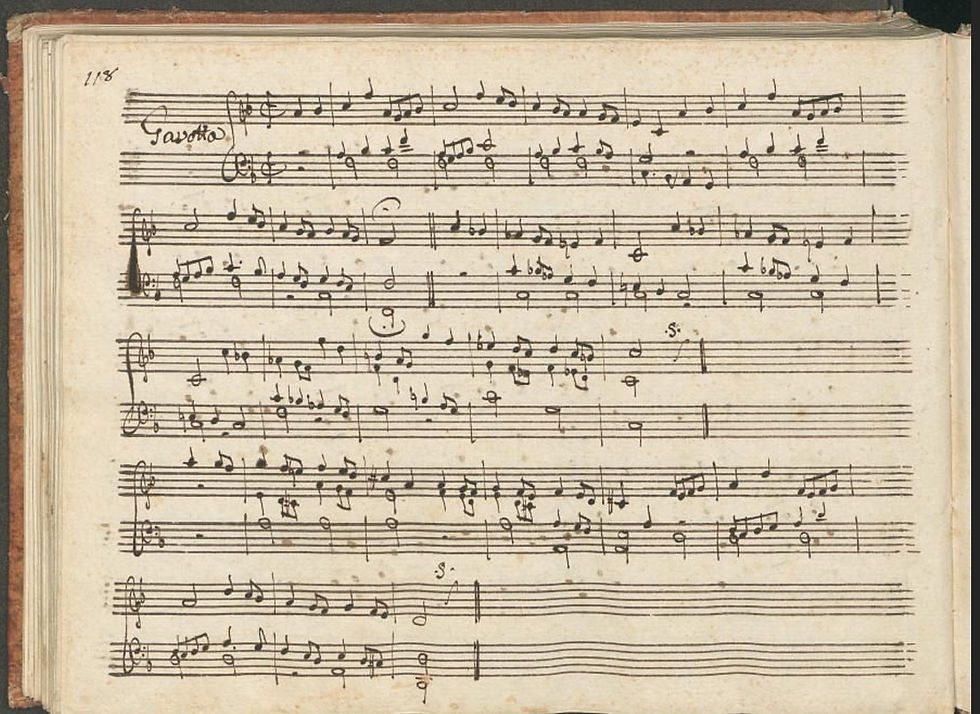What in the World is a Gavotte?
- 4 hours ago
- 3 min read
Introduction: What's a Gavotte?
Have you ever heard of a Gavotte? It's a fun and graceful French dance from a long time ago. The great news is you don't just have to dance it—you can learn to play it on the piano!

From a Lively Folk Dance to a Fancy Court Dance
The Gavotte started in the 16th century as a lively folk dance for the Gavot people in France, full of happy leaps and jumps. Over time, it travelled from the village to the royal court, where it was "purified" and grew more ornate. This process made the dance fancier and more formal, detaching the court version from its folk roots. Eventually, famous composers started writing Gavottes not just for dancing, but for people to listen to in concerts.
What Makes a Gavotte a Gavotte?
A Gavotte has a few special ingredients that make it unique. If you spot these, you'll know you're listening to a Gavotte!
Tempo: It has a moderate tempo, which means it's not too fast and not too slow. It's just right.
Time: It is usually written in 2/2 or 4/4 time. This is called duple time, meaning it has two main beats in each bar.
The Special Start: This is the most important clue! A Gavotte almost always begins on the second beat of the measure, not the first.
The Mood: The music feels graceful, elegant, and sometimes lively and playful.
Top Tips for Playing a Gavotte
Ready to play one yourself? Keep these tips in mind to make your Gavotte sound amazing.
Keep a Steady Beat: A steady pulse is key. Pay extra close attention to starting correctly on that special second beat to give the music its signature feel.
Use a Light, Crisp Touch: Gavottes sound best when the notes are clear and crisp. Use precise fingerwork and make sure to show the difference between smooth, connected notes (legato) and short, bouncy notes (staccato).
Shape the Melody: Find the musical sentences, or phrases, in the piece. You can make the music more interesting by playing some parts a little louder or softer (using dynamics) to bring out the elegant character of the melody.
Remember the Style: The Gavotte comes from the Baroque era. When you play, aim for a performance that is clear, balanced, and elegant—just like the fancy court dancers long ago!
Time for a Quick Quiz!
Let's see what you've learned! Choose the best answer for each question. Take the answer page to your lesson to receive two extra gems.
Where did the Gavotte dance originally come from?
Spain
France
Italy
What is a very special feature of how most Gavottes begin?
They start very loud.
They start on the second beat of the bar.
They start with a very slow tempo.
When playing a Gavotte, what kind of articulation (touch) should you aim for?
Heavy and dramatic
Smooth and connected all the way through
Clear and crisp, with a light touch
Key Words to Know
Gavotte : A French dance form from the 16th century with a moderate tempo, in duple time, and starting on the second beat.
Baroque era : A period in music history from about 1600-1750 when the Gavotte was very popular.
Anacrusis : The special name for a note or a group of notes that comes before the first strong beat of a musical phrase. It's also known as a "pickup."
Duple time : Music with two beats in a measure, like 2/2 or 2/4 time.
Legato : A musical instruction to play notes smoothly and connectedly.
Staccato : A musical instruction to play notes short and detached.
Augmented by AI

